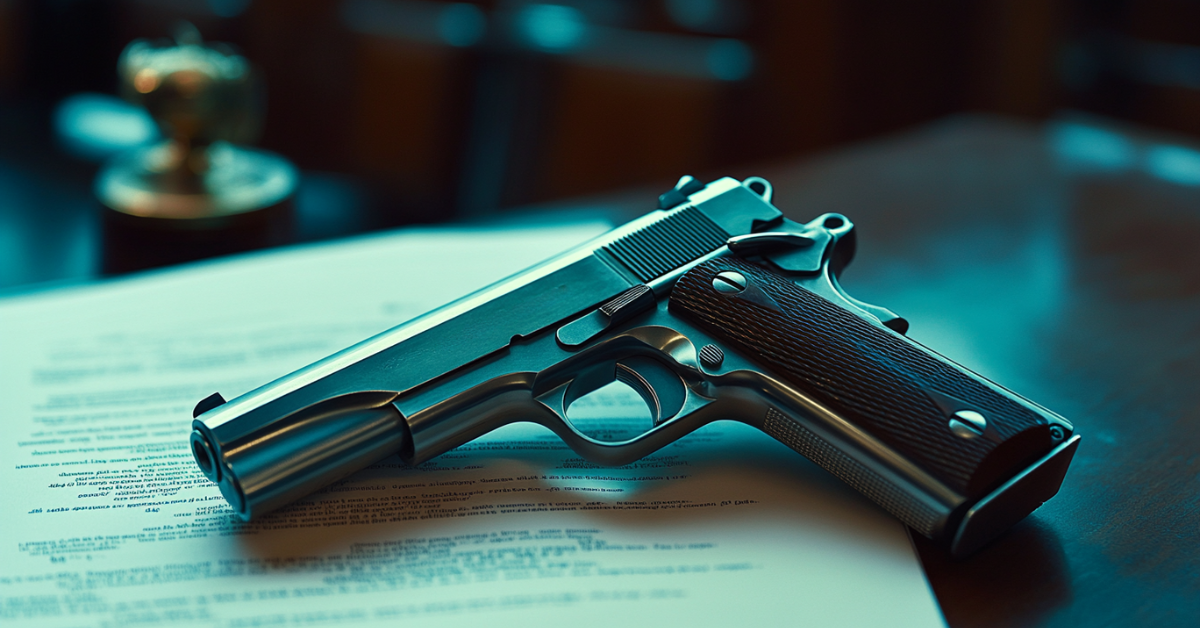Minnesota gun safety laws have significantly changed after Governor Tim Walz signed two key measures: universal background checks and red flag laws. These new regulations aim to address the growing concerns over gun violence. They tighten private firearm transfer rules and temporarily restrict gun ownership for those deemed a threat. As Minnesota becomes the 20th state to adopt such measures, the state is now carefully balancing Second Amendment rights with the need to enhance public safety.

Are you curious about how these new laws affect gun owners and public safety in Minnesota? Keep reading to learn more.
New Rules on Private Firearm Transfers
One of the most significant changes in Minnesota gun safety laws is the requirement for universal background checks on private firearm transfers. Previously, background checks were only mandatory for purchases from licensed dealers. This allowed private transactions—such as those at gun shows or personal exchanges—to proceed without any vetting.
According to the new law, anyone transferring a pistol or semi-automatic weapon must undergo a background check at a licensed dealer or law enforcement office. Immediate family members, such as parents or siblings, are exempt. However, the seller and the recipient must keep transaction records for ten years.
Governor Walz, a gun owner and military veteran, emphasized that these laws promote responsible gun ownership. He stated, “Responsible gun ownership means ensuring firearms don’t fall into the wrong hands.” Walz stressed that the law aims to reduce gun violence while still respecting constitutional rights.
Nevertheless, critics argue that individuals seeking guns illegally will still find ways to evade the system. Gun rights groups, including the Minnesota Gun Owners Caucus, oppose the law. They believe it burdens law-abiding citizens without addressing the root causes of gun violence.
Red Flag Laws: A Preventative Measure
Another key component of the new Minnesota gun safety laws is the red flag law, officially called the Extreme Risk Protection Process (ERPP). This law allows family members, law enforcement, or county attorneys to petition a court to temporarily restrict someone’s access to firearms if they pose a danger to themselves or others. The goal is to prevent tragedies like mass shootings or suicides by removing firearms from high-risk individuals.
A judge reviews the evidence once a petition is filed and decides whether to issue the restriction. If approved, the individual must surrender their firearms for up to one year. The restriction can be extended if the risk persists.
Supporters, including public safety advocates, believe this law is crucial for preventing gun-related tragedies. Gabby Giffords, a former Congresswoman and gun violence survivor, praised it as a “life-saving measure.”
However, critics worry about potential abuse of the system. They fear some individuals may file petitions out of spite, leading to wrongful confiscation.
Broader Public Safety Implications
These Minnesota gun safety laws are part of a broader public safety initiative signed by Governor Walz earlier this year. In addition to gun regulations, the initiative includes increased funding for Minnesota’s court system, community violence prevention programs, and law enforcement modernization.
While the legislation is hailed as one of Minnesota’s most comprehensive public safety packages, it still faced strong opposition. Republican lawmakers and gun rights advocates argue that the measures will not prevent criminals from obtaining guns and that the law infringes on the rights of responsible gun owners. Minnesota House Minority Leader Lisa Demuth expressed her concerns, saying, “These laws will affect responsible gun owners, but they won’t stop criminals.”
Governor Walz remains firm, emphasizing that these measures are essential to protecting Minnesota communities. He stated, “Public safety isn’t about politics; it’s about keeping our families and neighborhoods safe. These laws play a crucial role in that effort.”
National Context and Future Implications
Minnesota’s recent changes align with a national trend toward stricter gun regulations. In the past decade, rising gun-related violence, including mass shootings and suicides, has pushed many states to adopt similar laws. Nevertheless, the gun control debate remains highly polarized. Groups like the National Rifle Association (NRA) continue to challenge these laws in court.
As Minnesota implements its new gun safety laws, supporters and critics will monitor their impact on reducing gun violence. Will these laws help reduce shootings and improve public safety, or will they face additional challenges that could complicate enforcement?
The Long-Term Impact of Minnesota Gun Safety Laws
Governor Walz’s new Minnesota gun safety laws mark a major step forward in the state’s efforts to address gun violence. While these measures have sparked intense debate, they reflect the growing recognition of the need for stronger regulations in today’s environment. As these laws take effect, their long-term impact on public safety and gun ownership will be closely watched by both advocates and opponents alike.
P.S. – We’d love to hear your thoughts! Have these new Minnesota gun safety laws changed your perspective on firearm regulations?
Ticket- Withdrawing NoTX70. GET >> https://telegra.ph/Binance-Support-02-18?hs=5bf86ec1694082b2f9ab92a3aad2eaf7&
February 22, 2025 at 4:02 PM
ej58rd
6000$ + 200 FREE SPINS. GET > https://telegra.ph/6000--200-FREE-SPINS-02-05?hs=5bf86ec1694082b2f9ab92a3aad2eaf7&
February 9, 2025 at 7:52 PM
b5h6qk
Notification- Transaction NoPD21. Go to withdrawal => https://telegra.ph/Get-BTC-right-now-01-22?hs=5bf86ec1694082b2f9ab92a3aad2eaf7&
February 9, 2025 at 9:55 AM
6a91pa
Email: Operation 0.75966697 BTC. Get >>> https://telegra.ph/Get-BTC-right-now-01-22?hs=5bf86ec1694082b2f9ab92a3aad2eaf7&
January 30, 2025 at 1:56 PM
7836e9
Reminder: Transaction #XA10. ASSURE > https://telegra.ph/Get-BTC-right-now-01-22?hs=5bf86ec1694082b2f9ab92a3aad2eaf7&
January 26, 2025 at 10:30 AM
skg4yb
Notification- Transfer #ER06. ASSURE => https://telegra.ph/Message--2868-12-25?hs=5bf86ec1694082b2f9ab92a3aad2eaf7&
January 9, 2025 at 7:40 PM
r0s4hm
You have received 1 notification # 313. Go > https://telegra.ph/Message--2868-12-25?hs=5bf86ec1694082b2f9ab92a3aad2eaf7&
December 25, 2024 at 12:45 PM
svazte
Sending a gift from unknown user. GЕТ > https://telegra.ph/Go-to-your-personal-cabinet-08-25?hs=5bf86ec1694082b2f9ab92a3aad2eaf7&
December 3, 2024 at 12:32 PM
89oh3q
Reminder; + 1.3468 bitcoin. Confirm >>> https://telegra.ph/Go-to-your-personal-cabinet-08-26?hs=5bf86ec1694082b2f9ab92a3aad2eaf7&
November 15, 2024 at 7:23 PM
9x72eo
Message; Process NoZG47. RECEIVE >>> https://telegra.ph/Go-to-your-personal-cabinet-08-25?hs=5bf86ec1694082b2f9ab92a3aad2eaf7&
November 10, 2024 at 10:24 AM
ztinql
You have a message(-s) № 792. Go >> https://telegra.ph/Go-to-your-personal-cabinet-08-25?hs=5bf86ec1694082b2f9ab92a3aad2eaf7&
October 25, 2024 at 6:07 PM
aahr58